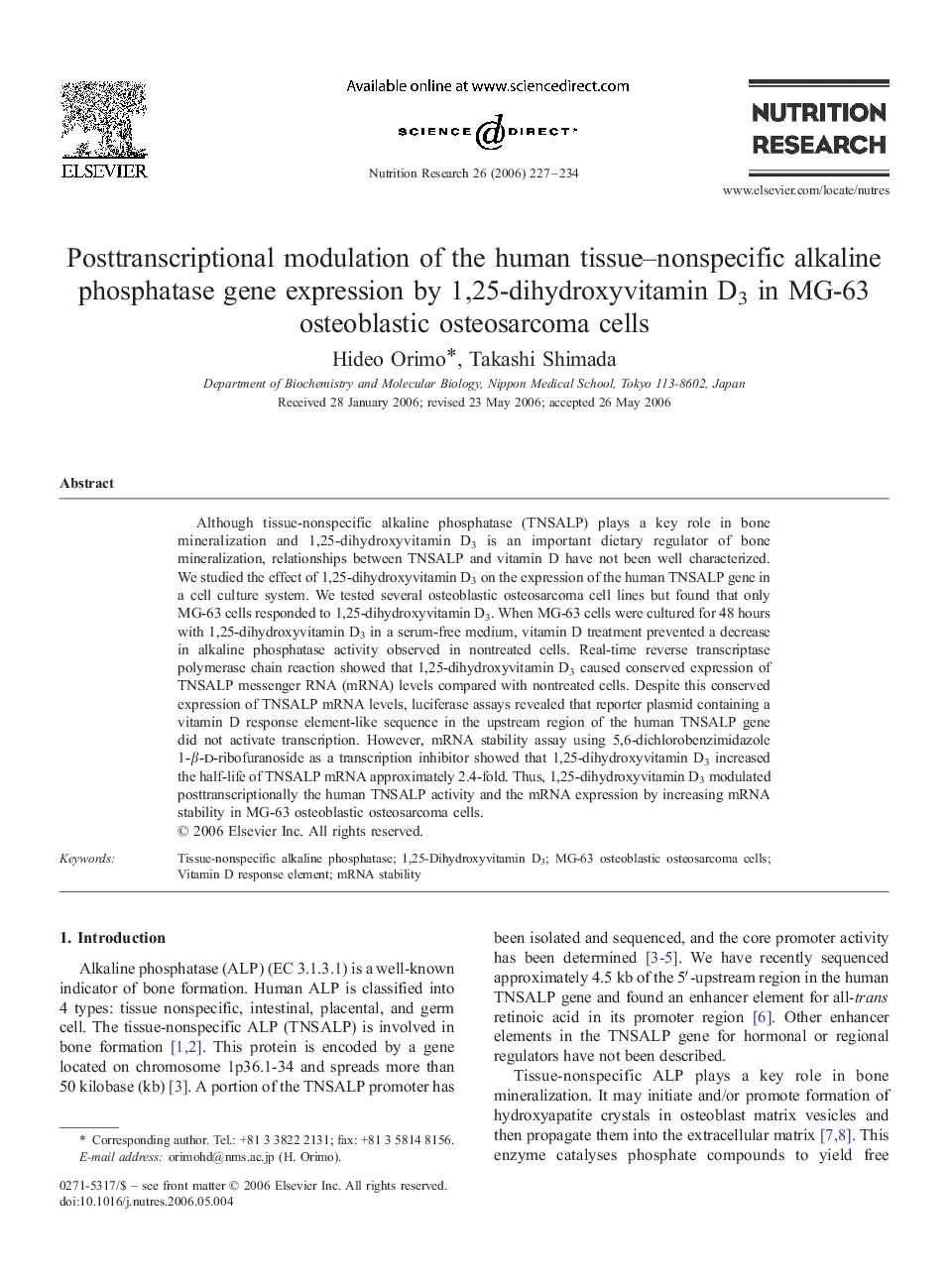| Article ID | Journal | Published Year | Pages | File Type |
|---|---|---|---|---|
| 2809843 | Nutrition Research | 2006 | 8 Pages |
Although tissue-nonspecific alkaline phosphatase (TNSALP) plays a key role in bone mineralization and 1,25-dihydroxyvitamin D3 is an important dietary regulator of bone mineralization, relationships between TNSALP and vitamin D have not been well characterized. We studied the effect of 1,25-dihydroxyvitamin D3 on the expression of the human TNSALP gene in a cell culture system. We tested several osteoblastic osteosarcoma cell lines but found that only MG-63 cells responded to 1,25-dihydroxyvitamin D3. When MG-63 cells were cultured for 48 hours with 1,25-dihydroxyvitamin D3 in a serum-free medium, vitamin D treatment prevented a decrease in alkaline phosphatase activity observed in nontreated cells. Real-time reverse transcriptase polymerase chain reaction showed that 1,25-dihydroxyvitamin D3 caused conserved expression of TNSALP messenger RNA (mRNA) levels compared with nontreated cells. Despite this conserved expression of TNSALP mRNA levels, luciferase assays revealed that reporter plasmid containing a vitamin D response element-like sequence in the upstream region of the human TNSALP gene did not activate transcription. However, mRNA stability assay using 5,6-dichlorobenzimidazole 1-β-d-ribofuranoside as a transcription inhibitor showed that 1,25-dihydroxyvitamin D3 increased the half-life of TNSALP mRNA approximately 2.4-fold. Thus, 1,25-dihydroxyvitamin D3 modulated posttranscriptionally the human TNSALP activity and the mRNA expression by increasing mRNA stability in MG-63 osteoblastic osteosarcoma cells.
